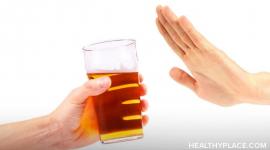Negative Air Ionization for Depression

Overview of negative air ionization therapy as an alternative treatment for seasonal affective disorder (SAD) and whether negative air ionization therapy works in treating depression.
What is Ionization Therapy?
A negative air ion is an atom or molecule in the air that has gained an electron, while a positive ion has lost an electron. Both positive and negative ions occur naturally in the air. However, negative ions are more concentrated in fresh air. Negative air ions can be produced by lightning, ocean surf and waterfalls. There are also electrical devices called 'air ionizers' that produce negative air ions. Such air ionizers have been used in the treatment of seasonal winter depression (seasonal affective disorder, SAD).
How does Ionization Therapy work?
Levels of a chemical messenger in the brain called serotonin decrease in autumn and winter. This decrease may be related to the depression that some people experience in the winter months. It has been proposed that negative air ions cause an increase in brain serotonin levels.
Is Ionization Therapy for Depression effective?
Two well-conducted studies have looked at the effects of air ionization on winter depression. Both of these studies compared a high-density air ionizer with a low-density ionizer. People sat in a room at home with the ionizer for 30 minutes every morning over a 2-3-week period. People with winter depression who used the high-density ionizer showed much more improvement than those who used the low-density ionizer. No studies have been carried out on air ionization as a treatment for other types of depression.
Are there any disadvantages to Ionization Therapy?
No side effects of air ionization have been found. However, air ionizers are expensive to buy.
Where do you get Ionization Therapy?
Air ionizers are available from electronics stores and can be bought on the internet. It is important to check the technical specifications of any air ionizer. Some of those on sale do not produce a high density of negative ions. A high-density ionizer produces 2,700,000 ions per cubic centimeter, while a low-density one produces only 10,000 ions per cubic centimeter.
Recommendation
Air ionization appears to be a promising treatment for winter depression, but more research is needed. Research still has to be carried out on its use with other types of depression.
Key references
Terman M, Terman JS. Treatment of seasonal affective disorder with high-output negative ionizer. Journal of Alternative and Complementary Medicine 1995; 1: 87-92.
Terman M, Terman JS, Ross DC. A controlled trial of timed bright light and negative air ionization for treatment of winter depression. Archives of General Psychiatry 1998; 55: 875-882.
APA Reference
Staff, H.
(2008, November 26). Negative Air Ionization for Depression, HealthyPlace. Retrieved
on 2025, April 20 from https://www.healthyplace.com/alternative-mental-health/depression-alternative/negative-air-ionization-therapy-for-depression



